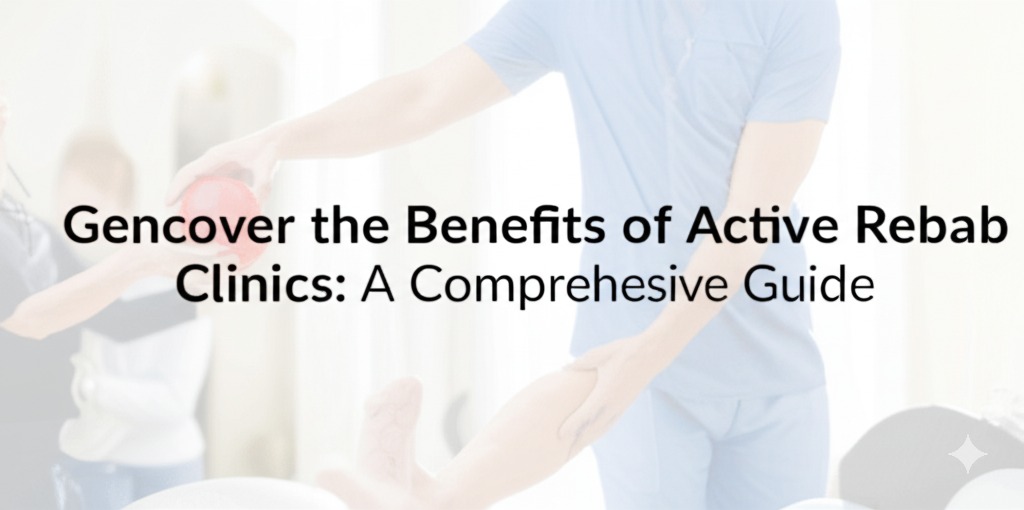When you’re recovering from an injury, surgery, or dealing with chronic pain, active rehabilitation can be the key to getting your life back. Unlike passive therapies where you lie back while the treatment is done to you, active rehab clinics focus on movement, exercise, and empowerment. These specialized facilities offer tailored programs designed to restore function, build strength, and improve overall wellness.
In this article, we’ll explore what active rehab clinics are, how they work, and why they’re becoming a preferred choice for recovery. Whether you’re dealing with a sports injury, a motor vehicle accident, or post-surgical rehabilitation, this guide will help you understand what to expect and how to choose the right clinic for your needs.
What Is an Active Rehab Clinic?
Active rehab clinics are healthcare facilities that specialize in movement-based rehabilitation programs. These clinics are typically staffed by kinesiologists, physiotherapists, and other rehabilitation professionals who design personalized exercise plans to help patients regain mobility and strength.
Key Features of Active Rehab
- Personalized treatment plans based on individual assessments
- Functional movement exercises to rebuild strength and endurance
- Focus on goal-oriented recovery—not just pain management
- Integration of education to promote long-term wellness
Active rehab is often used in conjunction with other therapies like chiropractic care, massage therapy, or physiotherapy for a well-rounded recovery approach.
Who Can Benefit from Active Rehabilitation?
Active rehab is ideal for a wide range of individuals, including:
1. Motor Vehicle Accident Victims
Those recovering from car accidents often suffer from soft tissue injuries, whiplash, and general deconditioning. Active rehab helps rebuild strength and flexibility while reducing pain.
2. Athletes Recovering from Injuries
From sprains to torn ligaments, athletes need a structured plan to safely return to play. Active rehab ensures sport-specific recovery tailored to each athlete’s needs.
3. Post-Surgical Patients
After orthopedic surgeries like ACL reconstruction or joint replacement, movement is critical. Active rehab guides patients through safe, progressive exercises that aid healing and restore function.
4. Individuals with Chronic Pain
For those with conditions like fibromyalgia or chronic back pain, active rehab can be a gentle, supportive approach to reintroducing movement and reducing long-term discomfort.
What to Expect at an Active Rehab Clinic
Walking into an active rehab clinic, you won’t find a row of massage tables or machines doing all the work. Instead, expect an interactive environment where you’ll be coached through targeted exercises that support your recovery.
Initial Assessment
Your journey typically starts with a comprehensive assessment. A kinesiologist or physiotherapist will evaluate:
- Your range of motion
- Strength levels
- Posture and gait
- Medical history and recovery goals
Customized Exercise Plan
Based on your assessment, you’ll receive a tailored exercise program. These exercises are usually functional, mimicking real-world movements to help you recover faster and more effectively.
Supervised Sessions
Most clinics offer one-on-one or small group sessions led by trained professionals. They’ll monitor your form, adjust your routine as needed, and ensure you’re progressing safely.
Why Choose an Active Rehab Clinic?
There are plenty of reasons why active rehab clinics are growing in popularity. Here are just a few of the key benefits:
1. Faster Recovery
Movement heals. Active rehab programs are designed to get your body moving in safe, structured ways that encourage faster tissue repair and reduce stiffness.
2. Personalized Care
No cookie-cutter routines here. Every treatment plan is unique and based on your specific needs and recovery goals.
3. Improved Long-Term Outcomes
Active rehab focuses on building strength and preventing future injuries, which means you’re not just getting better—you’re staying better.
4. Empowerment Through Education
Clinics often include educational components that teach patients how to manage their own recovery, build healthy habits, and stay injury-free.
How to Choose the Right Active Rehab Clinic
Not all clinics are created equal. When searching for the best fit, consider the following:
- Qualified staff: Look for clinics with licensed kinesiologists, physiotherapists, and rehab specialists.
- Customized programs: Ensure the clinic offers one-on-one assessments and tailored exercise plans.
- Positive reviews: Check Google or Yelp for patient testimonials and success stories.
- Clean, well-equipped facilities: A welcoming, professional environment can make a big difference in your recovery experience.
FAQs About Active Rehab Clinics
How often should I attend sessions?
This depends on your recovery needs, but many people start with 2–3 sessions per week.
Do I need a doctor’s referral?
Some clinics require a referral, especially if you’re using insurance or ICBC (in British Columbia), but many accept self-referrals too.
Is active rehab covered by insurance?
Many extended health plans and accident-related insurance claims cover active rehab services—check with your provider.
Start Your Recovery Journey Today
Active rehab clinics offer a dynamic, empowering approach to healing that puts you at the center of your recovery. With expert guidance, personalized plans, and evidence-based methods, these clinics help people from all walks of life move better, feel stronger, and live pain-free.

Kallie Snyder is an author at Stonegate Health Rehab, providing valuable insights, recovery guidance, and rehab resources to help individuals achieve better health and well-being.
